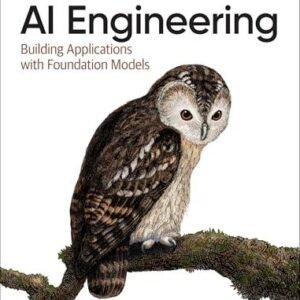In an increasingly interconnected world, the ability to communicate across languages and cultures has become more crucial than ever. Traditional barriers of language can stymie collaboration, innovation, and understanding, but with the advent of artificial intelligence (AI), we are witnessing a transformative shift in how we interact globally. AI technologies in translation and speech recognition are not only enhancing communication but are also redefining the very essence of human connectivity. In this article, we will explore the cutting-edge advancements in AI-driven translation and recognition systems, examining their impact on various sectors, their potential for fostering global dialogue, and the ethical considerations that accompany their rise. Join us as we delve into how AI is revolutionizing communication, breaking down borders, and paving the way for a more inclusive world.
Table of Contents
- The Evolution of AI in Language Translation and Recognition
- Breaking Down Barriers: How AI Enhances Global Communication
- Practical Applications of AI-Powered Translation Tools
- Future Trends in AI Translation: Preparing for a Multilingual World
- Insights and Conclusions
The Evolution of AI in Language Translation and Recognition
The journey of artificial intelligence in language translation and recognition has been nothing short of transformative. In the early days, translation tools relied heavily on basic algorithms and rule-based systems, which often resulted in awkward sentences and misunderstandings. As machine learning began to take center stage, systems evolved to incorporate massive datasets, allowing for more intuitive and context-aware translations. This shift saw the introduction of neural networks, which mimic the human brain’s processing patterns to enhance understanding and produce fluid, natural-sounding language. Today, advanced AI models not only achieve remarkable accuracy but also grasp cultural nuances and idiomatic expressions, making communication across languages more seamless than ever.
Furthermore, the integration of AI-powered voice recognition systems has revolutionized how we interact with technology. Gone are the days of clunky, slow speech recognition; modern systems boast impressive capabilities that enable real-time translation during conversations. With the advent of cloud computing and the vast amount of data accessible, these technologies continue to learn and adapt. Key advancements include:
- Contextual awareness: AI models can now understand context for more accurate translations.
- Multi-language support: Many tools can handle several languages simultaneously.
- User-friendly interfaces: Simplified user experiences have made these tools accessible to everyone.
As a testament to these advancements, the following table illustrates some of the leading AI translation tools available today:
| Tool Name | Key Features | Supported Languages |
|---|---|---|
| Google Translate | Instant translation, voice recognition | 100+ |
| DeepL Translator | Contextual translation, document translation | 30+ |
| Microsoft Translator | Real-time conversation translation | 70+ |
Breaking Down Barriers: How AI Enhances Global Communication
Artificial Intelligence is at the forefront of revolutionizing global communication by breaking down the linguistic barriers that have traditionally hindered interactions between diverse cultures. With machine learning and natural language processing, AI-driven translation tools such as Google Translate and DeepL have rapidly evolved to provide real-time translations that are far more accurate and contextually aware than their predecessors. This advancement empowers individuals and businesses to connect seamlessly, whether they are negotiating international deals, traveling, or engaging with foreign clients, allowing for more effective communication without the need for a human translator.
Moreover, AI’s capabilities extend beyond mere translation; they also encompass voice recognition and analysis. Innovations in speech-to-text technology allow for instant subtitling of spoken dialogue, catering to audiences who speak different languages or those with hearing impairments. AI systems can now recognize accents and dialects, making them increasingly sophisticated in accurately capturing the essence of spoken words. For instance:
| Technology | Functionality | Impact |
|---|---|---|
| Voice Recognition | Converts spoken language into text | Improves accessibility and comprehension |
| Contextual Translation | Provides translations based on context | Enhances accuracy and relevance |
| Real-Time Communication | Facilitates live translation during conversations | Enables immediate interaction across languages |
This comprehensive suite of tools fosters a more connected world, wherein differences in language no longer impede collaboration and understanding.
Practical Applications of AI-Powered Translation Tools
AI-powered translation tools have found their way into various sectors, enhancing efficiency and breaking down language barriers like never before. In global business, corporations leverage these tools to facilitate cross-border communications, enabling teams to collaborate seamlessly, share insights, and conduct negotiations in multiple languages without the need for traditional human translators. This capability not only accelerates the workflow but significantly reduces costs associated with translation services.
Moreover, AI-driven translation applications are reshaping the landscape of education and travel. Schools are integrating these tools into their curricula, allowing students to learn new languages dynamically and interactively. Meanwhile, travelers benefit from real-time translation apps that help them navigate foreign environments with ease, making their experiences richer and more authentic. Consider the following table highlighting key sectors transformed by AI translation tools:
| Sector | Application | Benefits |
|---|---|---|
| Business | Cross-border communication | Improved efficiency, lower costs |
| Education | Language learning tools | Enhanced engagement, greater accessibility |
| Travel | Real-time translation apps | Increased convenience, enriched experiences |
Future Trends in AI Translation: Preparing for a Multilingual World
The future of AI translation is poised to redefine communication by breaking down linguistic barriers and enabling seamless interaction across cultures. As global collaboration becomes increasingly vital in various sectors, we can anticipate a surge in demand for more precise and intuitive translation solutions. Companies are investing in sophisticated neural networks and machine learning algorithms that learn from vast datasets, ensuring that translations are not only grammatically correct but contextually appropriate. This evolution will be driven by:
- Real-Time Translation: Advancements in AI will allow for instant translation during live conversations, enhancing teamwork across borders.
- Cultural Nuance Understanding: Future systems will grasp idiomatic expressions and regional dialects, leading to more culturally sensitive translations.
- Voice Recognition Integration: AI will seamlessly blend voice recognition with translation capabilities, enabling smoother communication in diverse settings.
Moreover, as more businesses aim to serve global customers, personalized translation services will emerge, tailored to specific customer preferences and industry jargon. This shift will empower businesses to engage their audiences more effectively, laying the groundwork for localized content that resonates with users. To illustrate this trend, consider the following table showcasing predicted shifts in translation markets:
| Year | Market Size (in Billion $) | Key Developments |
|---|---|---|
| 2025 | 45 | Increased AI integration in commercial sectors |
| 2030 | 70 | Cultural customization in machine translation |
| 2035 | 100 | Universal translator devices become mainstream |
Insights and Conclusions
As we stand on the precipice of a communication revolution, the impact of AI in translation and recognition technologies is becoming increasingly evident. From bridging language barriers to enhancing real-time conversations, these innovations are not just reshaping the way we interact; they are fostering a deeper understanding among diverse cultures and communities.
The journey of AI in this realm is just beginning, and as these technologies continue to advance, we can expect even more seamless and intuitive communication experiences. Whether you’re a business looking to expand your global reach or an individual eager to connect with others across the globe, embracing AI in translation and recognition will open new doors of opportunity.
As we move forward, it is crucial to remain mindful of the ethical considerations and potential limitations that accompany these powerful tools. By advocating for responsible development and usage, we can harness the full potential of AI to create a more interconnected and empathetic world.
Thank you for joining us on this exploration of AI’s transformational impact on communication. Stay tuned for more insights and discussions on how technology continues to shape our lives in profound ways. Let’s embrace the future together, one word at a time.





